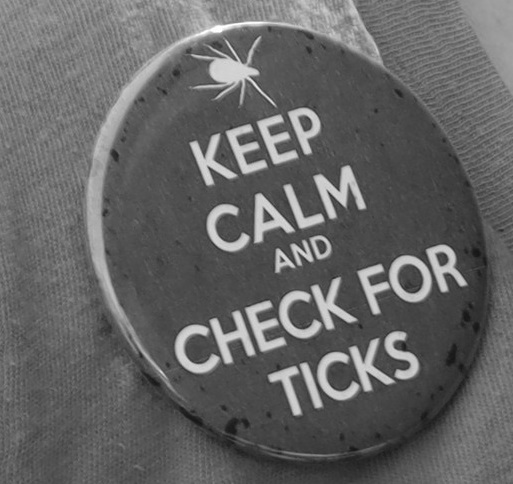June Is a Bad Month for Ticks in Connecticut
Understanding ticks is the first step to combatting them

By Dr. Eliza Little, Ph.D.
Globally, the number of ticks and tick-borne diseases are increasing. In the U.S., tick ranges are expanding every year, human cases of tick-borne diseases are rising and novel ticks and tick-borne pathogens are increasingly being identified. Since I started working at the Connecticut Agricultural Experiment Station in 2017, I’ve coauthored reports on the establishment of three novel tick vectors in the state: the lone star tick, the Gulf Coast tick and the Asian longhorned tick.
In the U.S., just three tick species, the American dog tick, the blacklegged (deer) tick and the lone star tick, are responsible for the majority of human disease. To distinguish one from another, look at the “shield” on the back. Blacklegged ticks have a sold black shield, whereas American dog and lone star ticks have patterned shields with white mottling and a white dot, respectively.
American dog ticks can transmit a bacterium that causes Rocky Mountain spotted fever, but this is rare in Connecticut. Lone star ticks can transmit several human diseases and medical conditions, but this tick is a newcomer in the state, and in 2019 just two cases of ehrlichiosis were reported, neither in Litchfield County. In Connecticut, blacklegged (deer) ticks are responsible for most human disease cases, including Lyme disease, babesiosis, anaplasmosis, ehrlichiosis and Powassan virus. These are ticks to watch out for.
Blacklegged ticks have a two-year lifecycle. Eggs hatch in the spring into larvae. Larvae tend to bite small mammals, and if that host harbors any pathogens, the larvae will pick them up. Once replete, the larvae fall off and molt into nymphs. The following spring, the nymphs target small- to medium-sized mammals, and again if that host is infected, the nymph will pick it up. When adult females emerge that fall or the following spring, they take a blood meal from a larger host to provide essential nutrients to develop eggs. It is important to note that ticks spend the majority of their lives living off hosts in the environment and are sensitive to temperature and humidity.
So how do you protect yourself from ticks and tick-borne pathogens? It is essential to understand that ticks don’t fly or jump or fall out of trees. They climb vegetation and wait for a host. Wearing light-colored pants tucked into socks is recommended, because then you can see a tick climbing up your pant leg. Other tick-bite prevention measures include repellents containing DEET, picaridin or oil of lemon eucalyptus; permethrin-treated clothing; and regular tick checks. A blacklegged tick must be attached for at least 24 if not 36 hours before it can transmit the bacterium that causes Lyme disease. After being in tick-infested areas (outside!) shower or go for a swim to rinse away any unattached ticks, and then check yourself closely for any others.
Seventy-five percent of people report encountering ticks at home. Homeowners can start by making smart landscaping decisions. Ticks like microhabitats that are warm and humid. Bring more light into your yard and reduce tick habitat around your house, targeting areas where leaves accumulate and dense undergrowth, especially Japanese barberry, proliferates. Hardscapes and xeriscapes are inhospitable places for ticks. Woodchip borders along the grass-wood edge of properties and trails can reduce the density of host-seeking ticks.
Ticks don’t move very far on their own but do hitch rides on animals. A single female that detaches from a mammal on a residential property can lay two thousand eggs. Fencing residential property and avoiding ornamental plants favored by deer can reduce the number of deer and thus the number of host-seeking ticks around your house. Reducing the rodent population by removing features that provide their habitat (e.g., stone walls and wood piles) and food sources (e.g., bird feeders) may also lower the density of ticks around your house.
Other measures include rodent-targeted acaricides, which kill mites and ticks; tick tubes that contain permethrin-treated cotton balls for rodents to use as nesting material; and bait boxes that, when rodents enter in search of food, treats them with the insecticide Fipronil. Anti-tick vaccines to protect against the bacterium that causes Lyme disease are currently being evaluated.
There are also broadcast products to directly kill host-seeking ticks, including synthetic chemical acaricides and natural plant-based acaricides and biological control agents such as entomopathogenic fungus. The synthetic chemicals are long-lasting and effective but act broadly against other arthropods including beneficial insects. The natural products are less harmful to non-targeted organisms but are more costly and require frequent applications.

In Connecticut, June is when the greatest number of people get Lyme disease. As people spend more time outdoors because of Covid, the likelihood of encountering a tick may increase in a year when tick activity is also higher than normal owing to a mild winter and spring. We must remain vigilant and remind ourselves and others to take precautions and perform daily tick checks.
If you are a Connecticut resident, get bitten by a tick, and want to know what species it is and if it is infected with a pathogen, you can send it to the Connecticut Agricultural Experiment Station Tick Testing Laboratory to get it tested free of charge. For more information, you can listen to a talk I gave in April to the Connecticut Land Conservancy, available on their homepage: https://colebrooklandconservancy.org/.
